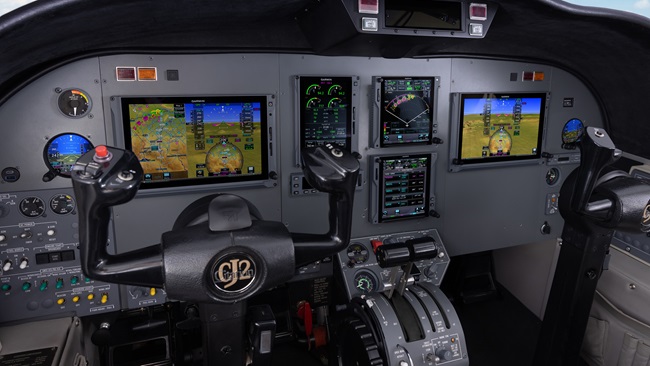Appareo launches transponder with ADS-B Out
Mode S device incorporates WAAS GPS receiver

The Stratus ESG combines a certified WAAS GPS for approved position information with a Mode S transponder that also provides the ADS-B Out capability required Jan. 1, 2020, generally in airspace where a transponder is required today. The Stratus ESG will be priced at $3,490, including the transponder, GPS antenna, and installation kit. Appareo said it will be the industry’s most affordable panel-mounted 1090ES transponder with a built-in WAAS GPS.
Stratus ESG also provides seamless integration with Stratus ADS-B portable receivers, which become the ADS-B In solution for traffic and free weather information, displayed on the popular ForeFlight Mobile app.
“We looked through a pilot’s lens and designed Stratus ESG from the ground up,” said Tony Grindberg, Appareo’s aviation business unit manager. “Our team wanted to provide a simple and affordable solution for the non-glass-panel market. We were laser-focused on developing an all-in-one-box solution to minimize installation costs for pilots.”
Stratus ESG is a modern digital transponder designed to replace analog transponders, connecting to an existing belly-mounted transponder antenna—making installation simple. A GPS antenna, included with the transponder, will have to be installed. For a typical single-engine piston aircraft, Appareo said that Stratus ESG will require approximately half the installation time required for a remote-mounted, 978-MHz universal access transceiver—an owner’s other option for complying with the 2020 mandate.
“While some UAT receivers are available at a lower cost, pilots are finding that the complex installation is pushing up the total expense to comply,” Grindberg said. “We knew 1090ES with a built-in WAAS GPS would give pilots the simple installation they’re looking for, while also upgrading their panel.”
Using the 1090-MHz Extended Squitter as the ADS-B Out solution gives aircraft owners flexibility—for example, the capability of operating outside of the United States, which is the only country so far to adopt the 978-MHz UAT option for ADS-B Out. “We believe that the 1090 is going to be the decision of choice for most of the aircraft,” Grindberg said. Of the first 10,000 U.S. ADS-B Out installations, two-thirds employ the 1090-MHz solution, Appareo noted.
Appareo established itself in the ADS-B portable receiver market with the introduction of its first Stratus ADS-B receiver in 2012. The success and popularity of the Stratus receivers encouraged the company to develop the Stratus ESG transponder with customers of its popular receiver in mind. “Through our partnership with ForeFlight and Sporty’s Pilot Shop, we’re closely connected with pilots and really understand their pain points,” said Derek Aslakson, Appareo’s aviation product manager. “We saw that the non-glass-panel market still wanted the benefits of ADS-B In while complying with the mandate for ADS-B Out. Now pilots can comply with the mandate while also upgrading to a full traffic picture,” Aslakson said.
Aircraft owners already using Stratus receivers will be able to connect them directly to the Stratus ESG, providing power and antenna feeds to the portable receiver, making it even more reliable as an ADS-B In solution because those antennas are mounted in optimal locations outside the aircraft, Aslakson said.



